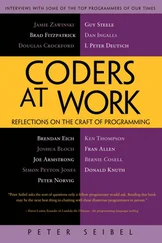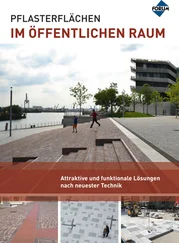Peter Siebel - Practical Common Lisp
Здесь есть возможность читать онлайн «Peter Siebel - Practical Common Lisp» весь текст электронной книги совершенно бесплатно (целиком полную версию без сокращений). В некоторых случаях можно слушать аудио, скачать через торрент в формате fb2 и присутствует краткое содержание. Год выпуска: 2005, ISBN: 2005, Издательство: Apress, Жанр: Программирование, на английском языке. Описание произведения, (предисловие) а так же отзывы посетителей доступны на портале библиотеки ЛибКат.
- Название:Practical Common Lisp
- Автор:
- Издательство:Apress
- Жанр:
- Год:2005
- ISBN:1-59059-239-5
- Рейтинг книги:4 / 5. Голосов: 1
-
Избранное:Добавить в избранное
- Отзывы:
-
Ваша оценка:
- 80
- 1
- 2
- 3
- 4
- 5
Practical Common Lisp: краткое содержание, описание и аннотация
Предлагаем к чтению аннотацию, описание, краткое содержание или предисловие (зависит от того, что написал сам автор книги «Practical Common Lisp»). Если вы не нашли необходимую информацию о книге — напишите в комментариях, мы постараемся отыскать её.
Practical Common Lisp — читать онлайн бесплатно полную книгу (весь текст) целиком
Ниже представлен текст книги, разбитый по страницам. Система сохранения места последней прочитанной страницы, позволяет с удобством читать онлайн бесплатно книгу «Practical Common Lisp», без необходимости каждый раз заново искать на чём Вы остановились. Поставьте закладку, и сможете в любой момент перейти на страницу, на которой закончили чтение.
Интервал:
Закладка:
Who This Book Is For
This book is for you if you're curious about Common Lisp, regardless of whether you're already convinced you want to use it or if you just want to know what all the fuss is about.
If you've learned some Lisp already but have had trouble making the leap from academic exercises to real programs, this book should get you on your way. On the other hand, you don't have to be already convinced that you want to use Lisp to get something out of this book.
If you're a hard-nosed pragmatist who wants to know what advantages Common Lisp has over languages such as Perl, Python, Java, C, or C#, this book should give you some ideas. Or maybe you don't even care about using Lisp—maybe you're already sure Lisp isn't really any better than other languages you know but are annoyed by some Lisper telling you that's because you just don't "get it." If so, this book will give you a straight-to-the-point introduction to Common Lisp. If, after reading this book, you still think Common Lisp is no better than your current favorite languages, you'll be in an excellent position to explain exactly why.
I cover not only the syntax and semantics of the language but also how you can use it to write software that does useful stuff. In the first part of the book, I'll cover the language itself, mixing in a few "practical" chapters, where I'll show you how to write real code. Then, after I've covered most of the language, including several parts that other books leave for you to figure out on your own, the remainder of the book consists of nine more practical chapters where I'll help you write several medium-sized programs that actually do things you might find useful: filter spam, parse binary files, catalog MP3s, stream MP3s over a network, and provide a Web interface for the MP3 catalog and server.
Ater you finish this book, you'll be familiar with all the most important features of the language and how they fit together, you'll have used Common Lisp to write several nontrivial programs, and you'll be well prepared to continue exploring the language on your own. While everyone's road to Lisp is different, I hope this book will help smooth the way for you. So, let's begin.
2. Lather, Rinse, Repeat: A Tour of the REPL
In this chapter you'll set up your programming environment and write your first Common Lisp programs. We'll use the easy-to-install Lisp in a Box developed by Matthew Danish and Mikel Evins, which packages a Common Lisp implementation with Emacs, a powerful Lisp-aware text editor, and SLIME, [10] Superior Lisp Interaction Mode for Emacs
a Common Lisp development environment built on top of Emacs.
This combo provides a state-of-the-art Common Lisp development environment that supports the incremental, interactive development style that characterizes Lisp programming. The SLIME environment has the added advantage of providing a fairly uniform user interface regardless of the operating system and Common Lisp implementation you choose. I'll use the Lisp in a Box environment in order to have a specific development environment to talk about; folks who want to explore other development environments such as the graphical integrated development environments (IDEs) provided by some of the commercial Lisp vendors or environments based on other editors shouldn't have too much trouble translating the basics. [11] If you've had a bad experience with Emacs previously, you should treat Lisp in a Box as an IDE that happens to use an Emacs-like editor as its text editor; there will be no need to become an Emacs guru to program Lisp. It is, however, orders of magnitude more enjoyable to program Lisp with an editor that has some basic Lisp awareness. At a minimum, you'll want an editor that can automatically match () s for you and knows how to automatically indent Lisp code. Because Emacs is itself largely written in a Lisp dialect, Elisp, it has quite a bit of support for editing Lisp code. Emacs is also deeply embedded into the history of Lisp and the culture of Lisp hackers: the original Emacs and its immediate predecessors, TECMACS and TMACS, were written by Lispers at the Massachusetts Institute of Technology (MIT). The editors on the Lisp Machines were versions of Emacs written entirely in Lisp. The first two Lisp Machine Emacs, following the hacker tradition of recursive acronyms, were EINE and ZWEI, which stood for EINE Is Not Emacs and ZWEI Was EINE Initially. Later ones used a descendant of ZWEI, named, more prosaically, ZMACS.
Choosing a Lisp Implementation
The first thing you have to do is to choose a Lisp implementation. This may seem like a strange thing to have to do for folks used to languages such as Perl, Python, Visual Basic (VB), C#, and Java. The difference between Common Lisp and these languages is that Common Lisp is defined by its standard—there is neither a single implementation controlled by a benevolent dictator, as with Perl and Python, nor a canonical implementation controlled by a single company, as with VB, C#, and Java. Anyone who wants to read the standard and implement the language is free to do so. Furthermore, changes to the standard have to be made in accordance with a process controlled by the standards body American National Standards Institute (ANSI). That process is designed to keep any one entity, such as a single vendor, from being able to arbitrarily change the standard. [12] Practically speaking, there's very little likelihood of the language standard itself being revised—while there are a small handful of warts that folks might like to clean up, the ANSI process isn't amenable to opening an existing standard for minor tweaks, and none of the warts that might be cleaned up actually cause anyone any serious difficulty. The future of Common Lisp standardization is likely to proceed via de facto standards, much like the "standardization" of Perl and Python—as different implementers experiment with application programming interfaces (APIs) and libraries for doing things not specified in the language standard, other implementers may adopt them or people will develop portability libraries to smooth over the differences between implementations for features not specified in the language standard.
Thus, the Common Lisp standard is a contract between any Common Lisp vendor and Common Lisp programmers. The contract tells you that if you write a program that uses the features of the language the way they're described in the standard, you can count on your program behaving the same in any conforming implementation.
On the other hand, the standard may not cover everything you may want to do in your programs—some things were intentionally left unspecified in order to allow continuing experimentation by implementers in areas where there wasn't consensus about the best way for the language to support certain features. So every implementation offers some features above and beyond what's specified in the standard. Depending on what kind of programming you're going to be doing, it may make sense to just pick one implementation that has the extra features you need and use that. On the other hand, if we're delivering Lisp source to be used by others, such as libraries, you'll want—as far as possible—to write portable Common Lisp. For writing code that should be mostly portable but that needs facilities not defined by the standard, Common Lisp provides a flexible way to write code "conditionalized" on the features available in a particular implementation. You'll see an example of this kind of code in Chapter 15 when we develop a simple library that smoothes over some differences between how different Lisp implementations deal with filenames.
For the moment, however, the most important characteristic of an implementation is whether it runs on our favorite operating system. The folks at Franz, makers of Allegro Common Lisp, are making available a trial version of their product for use with this book that runs on Linux, Windows, and OS X. Folks looking for an open-source implementation have several options. SBCL [13] Steel Bank Common Lisp
is a high-quality open-source implementation that compiles to native code and runs on a wide variety of Unixes, including Linux and OS X. SBCL is derived from CMUCL, [14] CMU Common Lisp
which is a Common Lisp developed at Carnegie Mellon University, and, like CMUCL, is largely in the public domain, except a few sections licensed under Berkeley Software Distribution (BSD) style licenses. CMUCL itself is another fine choice, though SBCL tends to be easier to install and now supports 21-bit Unicode. [15] SBCL forked from CMUCL in order to focus on cleaning up the internals and making it easier to maintain. But the fork has been amiable; bug fixes tend to propagate between the two projects, and there's talk that someday they will merge back together.
For OS X users, OpenMCL is an excellent choice—it compiles to machine code, supports threads, and has quite good integration with OS X's Carbon and Cocoa toolkits. Other open-source and commercial implementations are available. See Chapter 32 for resources from which you can get more information.
Интервал:
Закладка:
Похожие книги на «Practical Common Lisp»
Представляем Вашему вниманию похожие книги на «Practical Common Lisp» списком для выбора. Мы отобрали схожую по названию и смыслу литературу в надежде предоставить читателям больше вариантов отыскать новые, интересные, ещё непрочитанные произведения.
Обсуждение, отзывы о книге «Practical Common Lisp» и просто собственные мнения читателей. Оставьте ваши комментарии, напишите, что Вы думаете о произведении, его смысле или главных героях. Укажите что конкретно понравилось, а что нет, и почему Вы так считаете.








